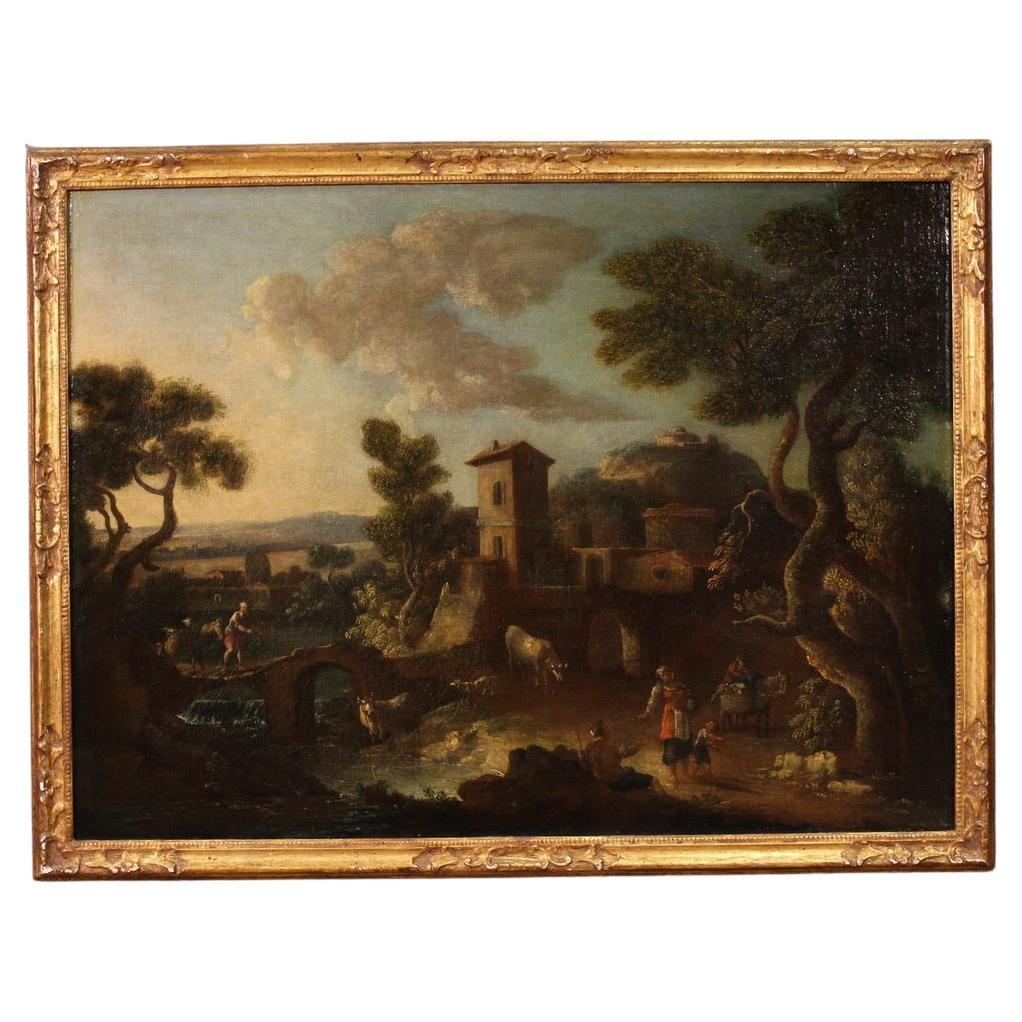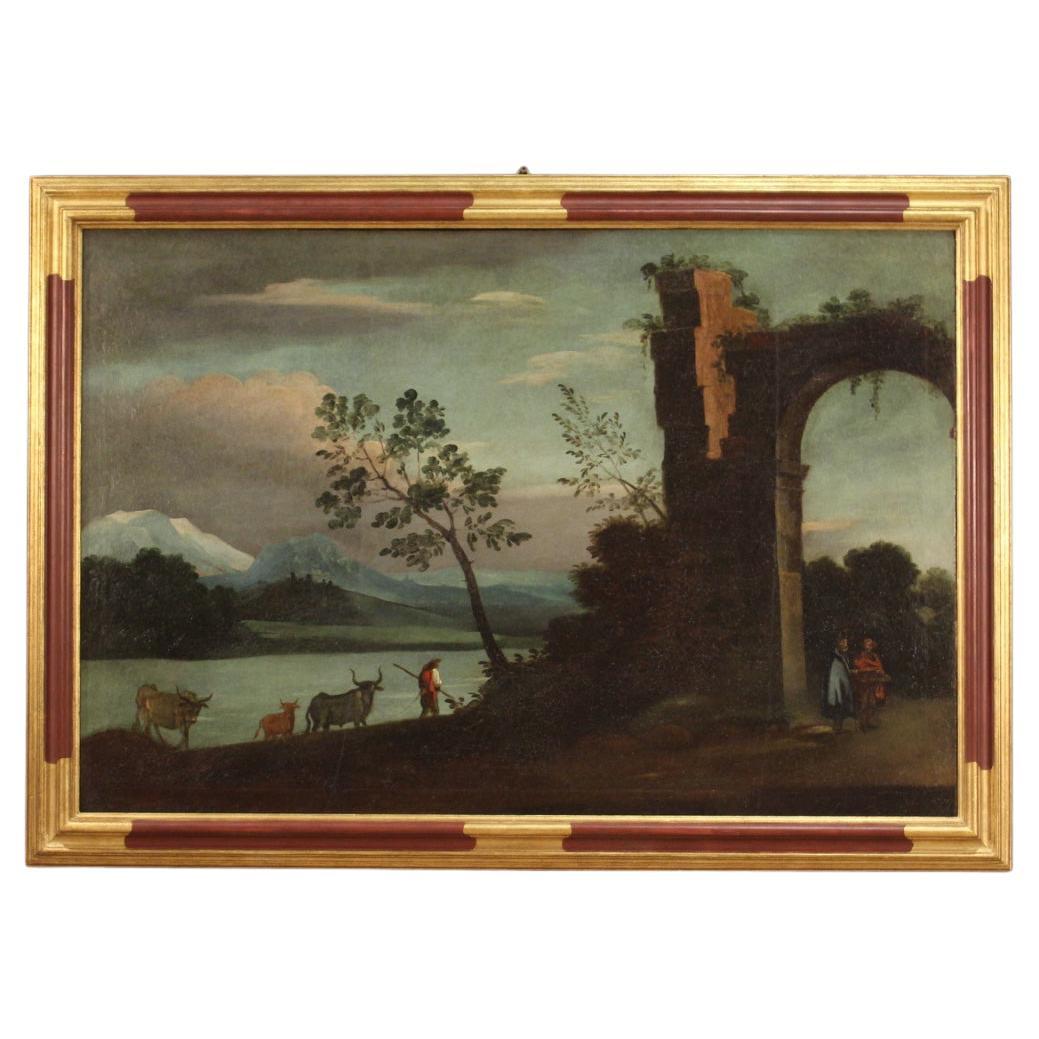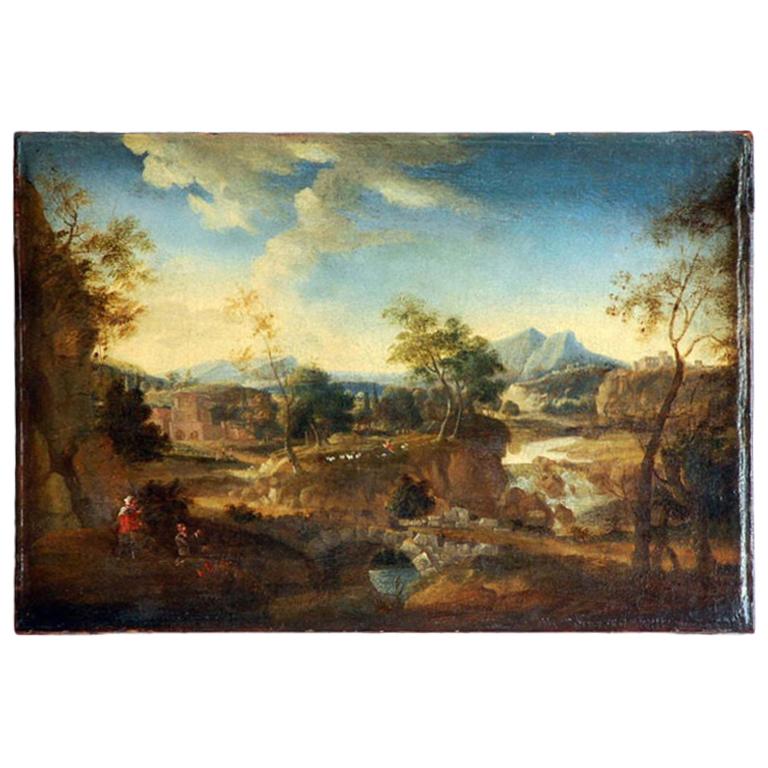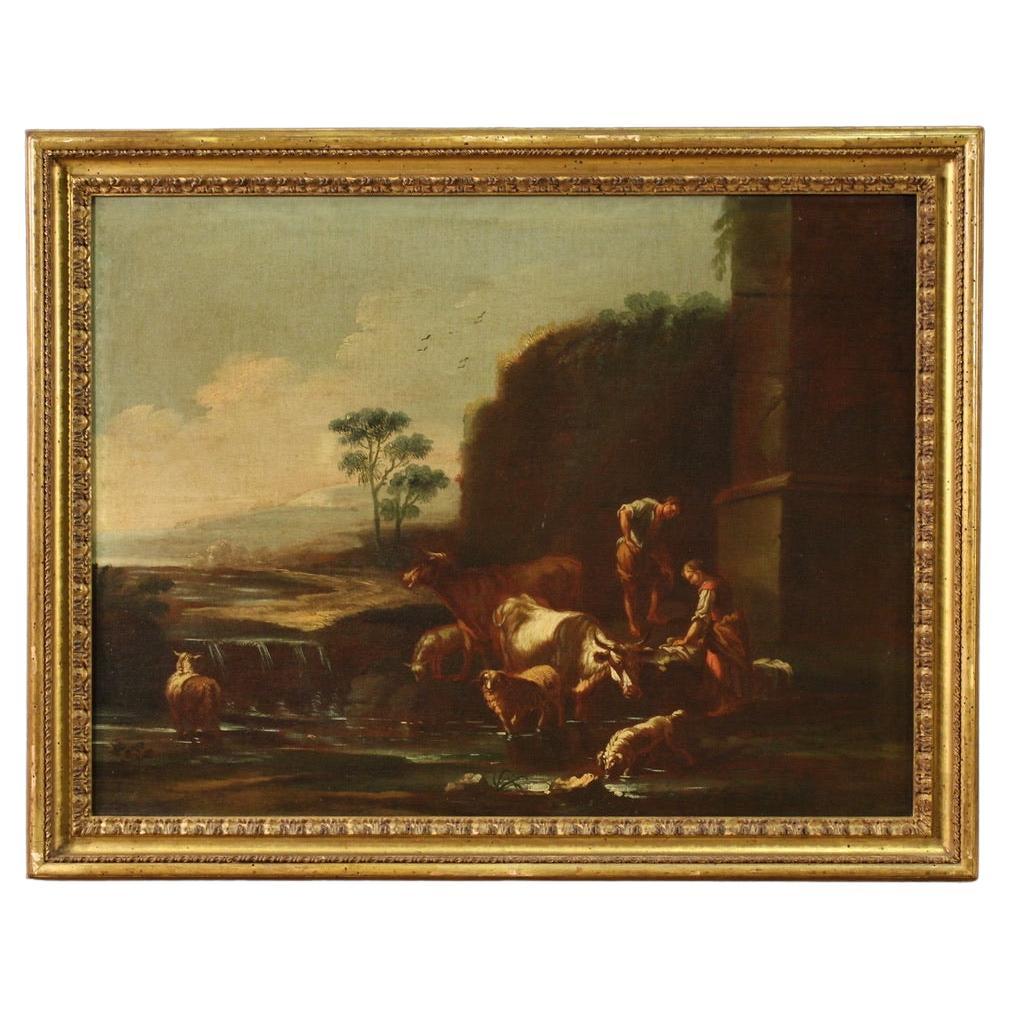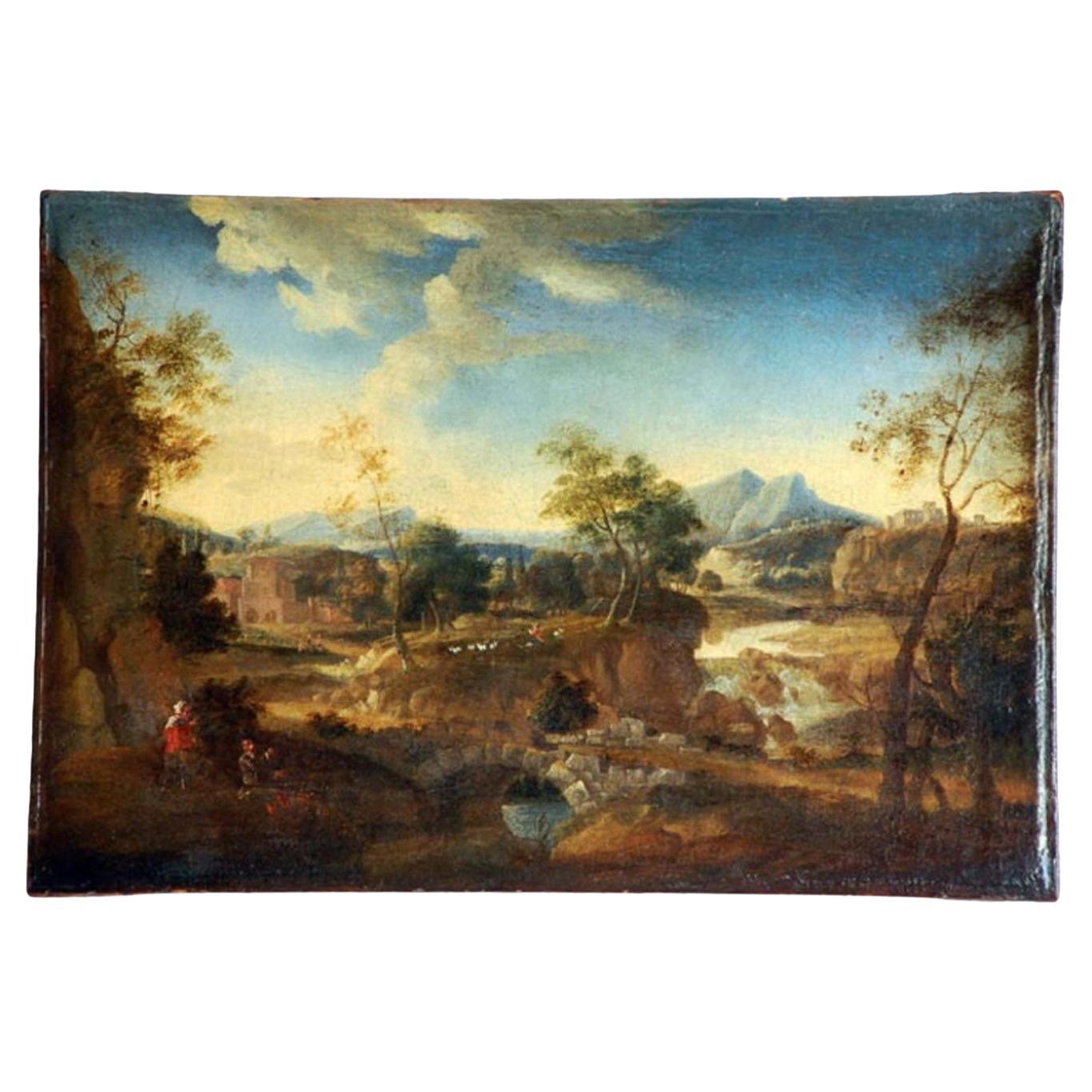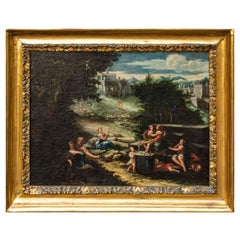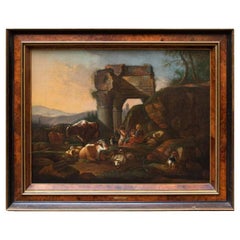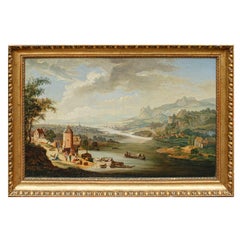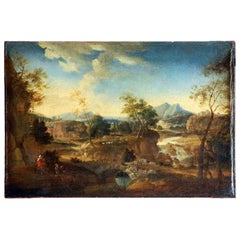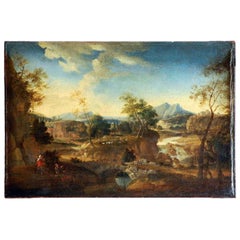Items Similar to 17th Century Roman Landscape Painting Oil on Canvas by Bloemen
Want more images or videos?
Request additional images or videos from the seller
1 of 6
17th Century Roman Landscape Painting Oil on Canvas by Bloemen
$3,308.07
£2,479.60
€2,800
CA$4,544.72
A$5,073.75
CHF 2,658.57
MX$62,107.74
NOK 33,763.88
SEK 31,835.05
DKK 21,314.62
Shipping
Retrieving quote...The 1stDibs Promise:
Authenticity Guarantee,
Money-Back Guarantee,
24-Hour Cancellation
About the Item
Workshop of Jan Frans van Bloemen (Antwerp, 1622 - Rome, 1749)
Lazio landscape
Oil on canvas, 48.5 x 64.5 cm
The painting, to be considered belonging to the vast production of Jan Frans van Bloemen and his students, first of all Marcantonio Sardi, active in Rome between 1711 and 1733.
The composition portrays the luxuriant Roman countryside, in particular it is the village of Grottaferrata with the church and convent of Santa Maria and San Nino, following an image scheme well tested by the 18th century landscape architects active in the papal city and in particular from Bloemen, as the numerous comparisons of paintings now in national and international private collections clearly show (Florence, Bari, London and New York), in the three recurring figures, the washerwoman and the man and woman seated on ancient ruins in the foreground who address her casually, while in the background the perched village and the vast valley with pointed peaks open up.
He belonged to a family of Flemish painters and designers, also active in Italy and France. From 1686-1687 the two brothers, Jan and Pieter, lived in Rome, where they joined the Schildersbent, Pieter with the nickname of Banner, probably for the banners he painted in the battle scenes, while Jan Frans with the nickname of Orizzonte , for the ease with which he painted landscapes, previously given to Claude Lorrain. Jan no longer left Rome except for a short period of eight months, during which he visited Naples, Sicily and Malta, in 1714 he was included among the Virtuosi al Pantheon and collaborated with Placido Costanzi and Filippo Lauri. Among his patrons and collectors we remember the Pallavicini families (in whose gallery there are some paintings still today) and Rospigliosi, Luigi Bonaparte,
Orizzonte was fascinated by the beauty of Rome and its surroundings and inspired by the classic landscapes of Gaspard Dughet. Having as a basis the Flemish landscape tradition, he had no difficulty in assimilating Dughet's analytical realism and quickly becoming one of the best classical landscape painters in Rome in the first half of the 18th century [6] proceeding according to the Arcadian-Rococo style of the period. Van Bloemen's changing motifs of light and shadow are also characteristic of Dughet's work, so much so that Horizon's paintings were sometimes mistaken for Dughet's. Van Bloemen used other artists to complement his landscapes with figures. Among these were Carlo Maratta, Placido Costanzi, Pompeo Batoni and his brother Pieter.
- Dimensions:Height: 19.3 in (49 cm)Width: 25.99 in (66 cm)Depth: 1.19 in (3 cm)
- Materials and Techniques:
- Place of Origin:
- Period:Late 17th Century
- Date of Manufacture:17th Century
- Condition:Refinished. Wear consistent with age and use. The painting has been cleaned.
- Seller Location:Milan, IT
- Reference Number:1stDibs: LU5918226671422
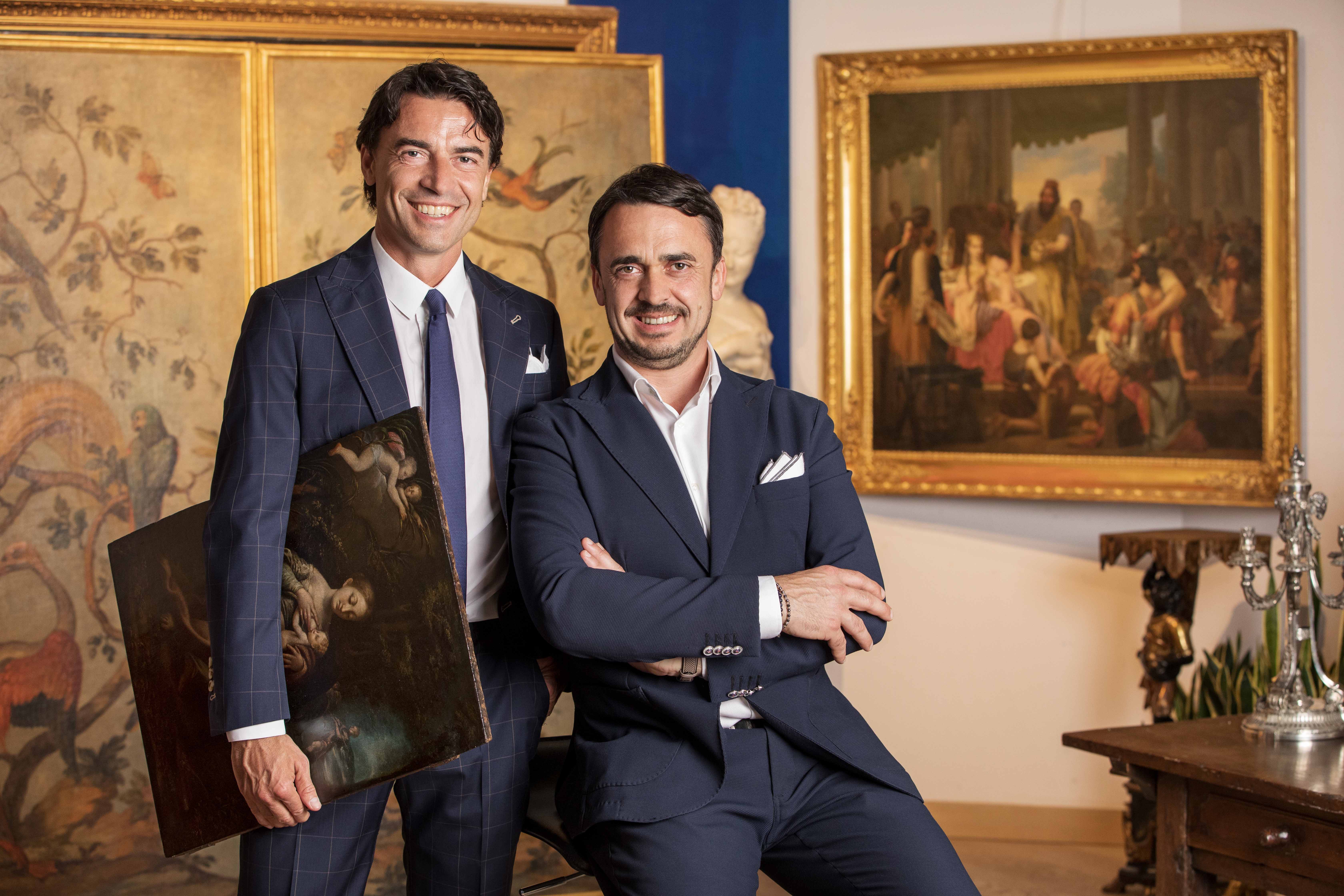
About the Seller
5.0
Vetted Professional Seller
Every seller passes strict standards for authenticity and reliability
Established in 2000
1stDibs seller since 2021
30 sales on 1stDibs
- ShippingRetrieving quote...Shipping from: Milan, Italy
- Return Policy
Authenticity Guarantee
In the unlikely event there’s an issue with an item’s authenticity, contact us within 1 year for a full refund. DetailsMoney-Back Guarantee
If your item is not as described, is damaged in transit, or does not arrive, contact us within 7 days for a full refund. Details24-Hour Cancellation
You have a 24-hour grace period in which to reconsider your purchase, with no questions asked.Vetted Professional Sellers
Our world-class sellers must adhere to strict standards for service and quality, maintaining the integrity of our listings.Price-Match Guarantee
If you find that a seller listed the same item for a lower price elsewhere, we’ll match it.Trusted Global Delivery
Our best-in-class carrier network provides specialized shipping options worldwide, including custom delivery.More From This Seller
View All17th Century Rural Landscape with Gallant Scenes Painting Oil on Canvas
Located in Milan, IT
17th century, Emilian school
Rural landscape with gallant scenes
Oil on canvas, 37 x 47.5 cm
With frame 61 x 50.5 cm
The bucolic amenity of the present is reflected in the joyful gallant scenes that dot its surface. The locus amoenus described reflects on the more traditional inflection of Arcadia, which in the literary transfiguration was the scenario par excellence of the most carefree pastoral life and out of this world; the painting is therefore a forerunner of what was professed by the actual poetic academy of Arcadia which was established in Rome in 1690, but enthusiastically testifies to the feverish invitations to its acceptance, then widespread in the most avant-garde cultural salons throughout Italy. First Theocritus and Virgil later had awakened with Idilli and Bucoliche that capacity typical of the natural world to allow an escape from reality; the contemplation of perfect natural fruits that followed would have evoked in the spirits of dreaming men back to origins. The bucolic landscape was able to positively give a rhythm to material life, and constituted the concretization of a place devoid of incivility and ugliness, where only dreams, wild music and homages to fruitful nature were allowed.
In the present painting widespread figures of shepherd children trace the same intent to the sublimation of earthly life, gathered in pairs, while children on the model of the ancient cherubs cheer the field with flowers and petals. The games of these and the sweet affections of the other characters are rendered through liquid and vibrant brushstrokes, flickering with a white light that opposes the dark shadow of the undergrowth. In the distance, the sky tapers with a silvery and flat brushstroke, while the vertical development of the promoters with architectures helps to introject a bright beam of light into the grassy clearing. The foliage and the turf of the landscape piece are rendered through a digital brushstroke, betraying the Italian brand of the present, influenced at the same time by the seventeenth-century European influences that then conveyed to the capital. The evocative culture of the city attracted many artists from the city of Bologna, from the Italian north but also from the territories beyond the Alps, such as Claude Lorrain and Nicolas Poussin. The historical-artistic heritage of the Italian pastoral scenes was thus able to fill up with the more functional and particular formalisms of the charms coming from elsewhere, such as the expressive tremor of the present, similar to the contemporary French lexicon.
The typological restitution from pastoral idyll, in accordance with the intrinsic stylistic qualities of the work, allows us to specify the solid belonging of the present to the Italian hand, similarly to what was then emerging in the pictorial sphere within the Emilian school. In this regard, we should recall the latent influences of two decisive foreign landscape painters who passed through the Emilian belt, such as Claude Lorrain (1600-1682) and Nicolas Poussin (1594-1665); before them, Giovanni Battista Viola...
Category
Antique 17th Century Italian Paintings
Materials
Canvas
17th Century Architectural Capriccio with Herds Painting Oil on Canvas
Located in Milan, IT
Circle of Nicolaes Berchem (1620, Haarlem - 1683, Amsterdam)
Architectural capriccio with herds
Oil on canvas, 57.5 x 74 cm
With frame 76 x 93 cm
The examined canvas is...
Category
Antique 17th Century Dutch Paintings
Materials
Canvas
Late 17th Century Landscape with Sailing Ship at Anchor Painting Oil on Canvas
Located in Milan, IT
Painter active in Rome (late 17th century)
Coastal landscape and ships under repair
Oil on canvas, 113 x 143 cm
With frame 125 x 159
This fantasy coastal view can be attributed to a foreign painter active in Italy between the 17th and 18th centuries. The Italianizing taste, in our case deduced from the models of Agostino Tassi and especially from the examples of Gaspare Vanvitelli...
Category
Antique Late 17th Century Italian Paintings
Materials
Canvas
River landscape of late 18th century - early 19th century
Located in Milan, IT
Late 18th - early 19th century
River Landscape
Oil on canvas, 64 x 96 cm - with frame 77 x 10 cm
The canvas in question is an example of Vedutist painting at the turn of the 18th an...
Category
Antique Late 18th Century Italian Paintings
Materials
Canvas
17th century, Landscape with characters
Located in Milan, IT
XVII Century
Landscape with characters
Oil on canvas, 72 x 92 cm
Framed, 95 x 112 cm
Category
Antique 18th Century and Earlier Dutch Other Paintings
Materials
Canvas
17th century, Landscape with characters
Located in Milan, IT
XVII Century
Landscape with characters
Oil on canvas, 72 x 92 cm
Framed, 95 x 112 cm
Category
Antique Late 17th Century Dutch Other Paintings
Materials
Canvas
You May Also Like
17th Century Oil on Canvas Italian Antique Painting Landscape with Figures, 1680
Located in Vicoforte, Piedmont
Antique Italian painting from the second half of the 17th century. Oil on canvas artwork depicting a wonderful bucolic landscape with a village, common people and grazing animals. Wi...
Category
Antique 1680s Italian Paintings
Materials
Canvas
18th Century Oil on Canvas Italian Antique Landscape Painting, 1750
Located in Vicoforte, Piedmont
Antique Italian painting from 18th century. Framework oil on canvas, on the first canvas, depicting a view with characters, animals and ruins of good pictorial quality. Large size fr...
Category
Antique 1750s Italian Paintings
Materials
Canvas
Early 17th Century French Landscape Painting
Located in Los Angeles, CA
Early 17th century French landscape painting. Unframed.
Category
Antique Early 17th Century French Louis XIV Paintings
Materials
Canvas, Paint
Early 17th Century French Landscape Painting
Located in Los Angeles, CA
Early 17th century French landscape painting. Unframed.
Category
Antique Early 17th Century French Louis XIV Paintings
Materials
Canvas, Paint
17th Century Oil on Canvas Italian Antique Landscape Painting Pastoral Scene
Located in Vicoforte, Piedmont
Antique Italian painting from the second half of the 17th century. Oil on canvas artwork depicting a splendid bucolic landscape with figures and grazing animals, of remarkable pictor...
Category
Antique 1680s Italian Paintings
Materials
Canvas
Early 17th Century French Landscape Painting
Located in Los Angeles, CA
Early 17th century French landscape painting. Unframed.
Category
Antique Early 17th Century French Louis XIV Paintings
Materials
Canvas, Paint
More Ways To Browse
Antique Maltese Furniture
18th Century Maltese Furniture
Luigi Filippo
Church Banner
Gaspard Dughet Italian Landscape
Pieter Van Bloemen
Severin Roesen
Sir William Russell Flint
Squirrel Man Furniture
Stephanie Hoppen
Steve Burgess
Szasz Paintings
Thomas Pulgini
Turner Airbrush
Used Furniture North Shore Ma
Victor Petre
Vintage Magnolia Mirror
Vintage Vanguard Lee Reynolds
